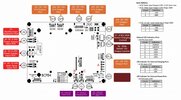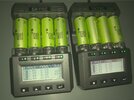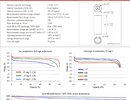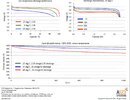Müller
Active Member
Hello.
For powering purposes one might consider these battery-boards. I use several of these for various devices. Reliable items.
 store.sure-electronics.com
store.sure-electronics.com
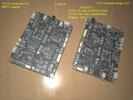
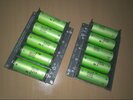
These boards are meant to be used with Lion (4,2V)-cells. They do NOT charge LiFePO4. But there´s no problem in using PO4 for only-discharging purposes and charge them externally. Which is what i do because especially the A123 are superior cells to Lions. Much better in cold environments, much faster to charge, much more cycles especially when charging them to "only" 3,5V instead of 3,65V. Forever-cells ...
For Lion: The board charges the cells, balances the cells during charging and watches the cells during discharge-mode down to 2,8V, then cuts the power to the load so the cells are well protected.
For LiFePO4: No charging allowed! The board watches the cells down to 2,8V, then cuts the power to the load.
The boards show how much kerosine is left:
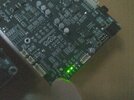
When swapping discharged cells to fresh ones (not charged by the board internally) the boards have to be activated once to deactivate the 2,8V undervoltage-protection lock. This can be done with any voltage-input above 5V. Just connect for a sec. and you´re gtg. And yes, a switch would be more comfortable ...
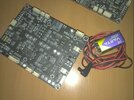
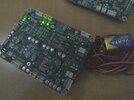
For these boards, a connector-kit is available. I always order board AND kit. It´s a dream-team.
 store.sure-electronics.com
store.sure-electronics.com
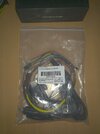
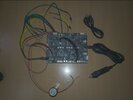
The A139 connects like this:
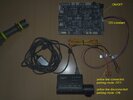
With the A123 the 139 is active (4k, no parking mode, max. bit-rate, constant recording) for about 8hrs. (But: you have to have a bit of an eye on matching cells, means a cell with a high internal resistance hiding between 4 other cells with a low resistance can shorten the -ON-time of your device significantly because this one cell reaches the 2,8V faster then the other ones and triggers the undervoltage-lock.
When you want to use 26650 Lion-cells which have about double the capacity of the A123 you might get into the range of 12 to 15 or more hrs. I haven´t tested.
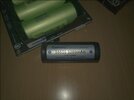
The naked boards might find a home in such or similar housings:
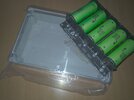
For powering purposes one might consider these battery-boards. I use several of these for various devices. Reliable items.
WONDOM | STORE


These boards are meant to be used with Lion (4,2V)-cells. They do NOT charge LiFePO4. But there´s no problem in using PO4 for only-discharging purposes and charge them externally. Which is what i do because especially the A123 are superior cells to Lions. Much better in cold environments, much faster to charge, much more cycles especially when charging them to "only" 3,5V instead of 3,65V. Forever-cells ...
For Lion: The board charges the cells, balances the cells during charging and watches the cells during discharge-mode down to 2,8V, then cuts the power to the load so the cells are well protected.
For LiFePO4: No charging allowed! The board watches the cells down to 2,8V, then cuts the power to the load.
The boards show how much kerosine is left:

When swapping discharged cells to fresh ones (not charged by the board internally) the boards have to be activated once to deactivate the 2,8V undervoltage-protection lock. This can be done with any voltage-input above 5V. Just connect for a sec. and you´re gtg. And yes, a switch would be more comfortable ...


For these boards, a connector-kit is available. I always order board AND kit. It´s a dream-team.
WONDOM | STORE


The A139 connects like this:

With the A123 the 139 is active (4k, no parking mode, max. bit-rate, constant recording) for about 8hrs. (But: you have to have a bit of an eye on matching cells, means a cell with a high internal resistance hiding between 4 other cells with a low resistance can shorten the -ON-time of your device significantly because this one cell reaches the 2,8V faster then the other ones and triggers the undervoltage-lock.
When you want to use 26650 Lion-cells which have about double the capacity of the A123 you might get into the range of 12 to 15 or more hrs. I haven´t tested.

The naked boards might find a home in such or similar housings:



